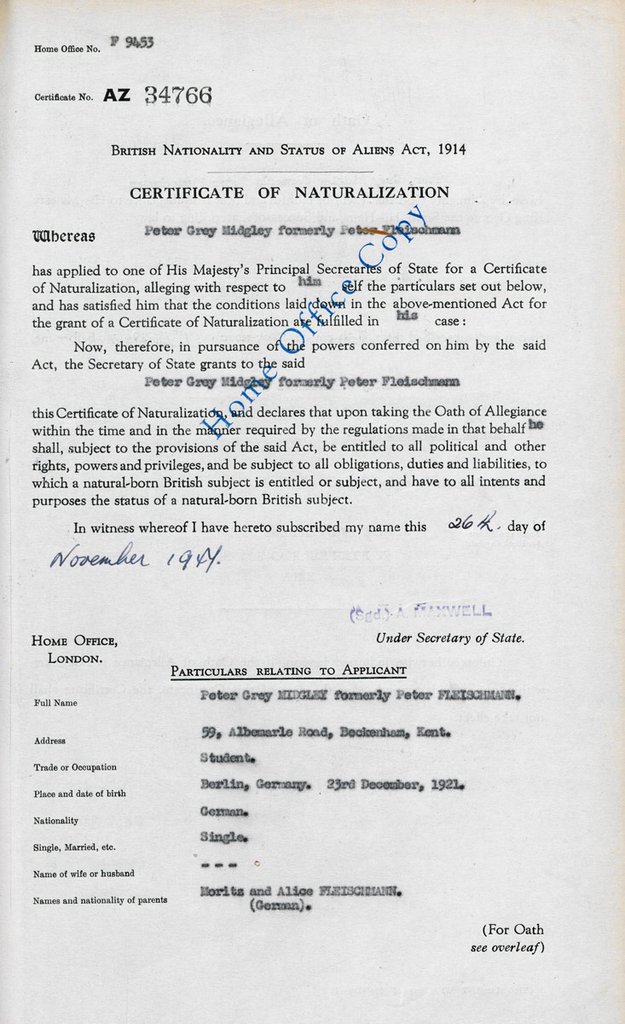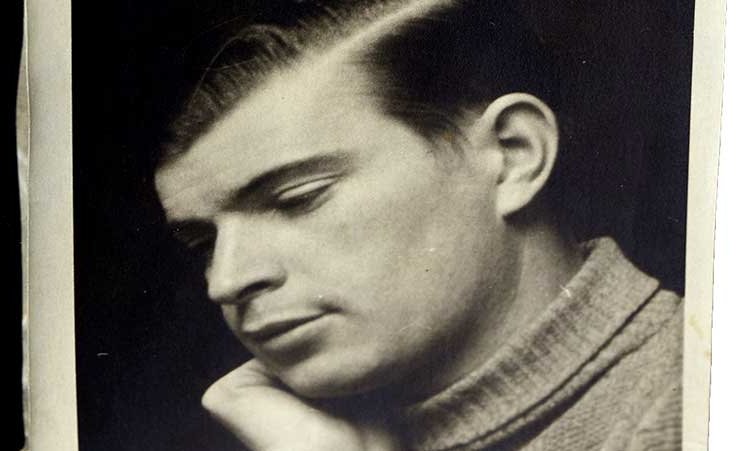Art and captivity during the Second World War
Creativity was an important outlet for many Second World War prisoners of war who employed artistic skills as a means of resistance, and after as a way of sharing their experiences. Our records offer an insight into the role of art in their lives.
Drawing of a fake aircraft by Guy Griffiths
Date: 1945
Catalogue reference: View the record N/A in the catalogue
This sketch of a ‘Westland Wildcat’ aircraft was produced by Guy Griffiths (1915–1999) while he was a prisoner of war (POW). Griffiths served as a pilot in the Royal Marines and was captured in 1939. He was held in various German prisoner of war camps, including Dulag Luft and Stalag Luft III. During his incarceration he began work as a forger. He used his artistic skills to produce fake documents and drawings of fake aircraft, based on real designs, to mislead Nazi intelligence. A photograph of Griffiths was also used as a decoy for a secret letter sent to British Secret Services.
This drawing is one of several in a file documenting the questionnaire Griffiths completed on his return after the war. On the back of the drawing he wrote ‘this was an imaginary type, to speak about, as a long-range escort fighter, to find out how much they knew about our new DH. [de Havilland] equipment...'.
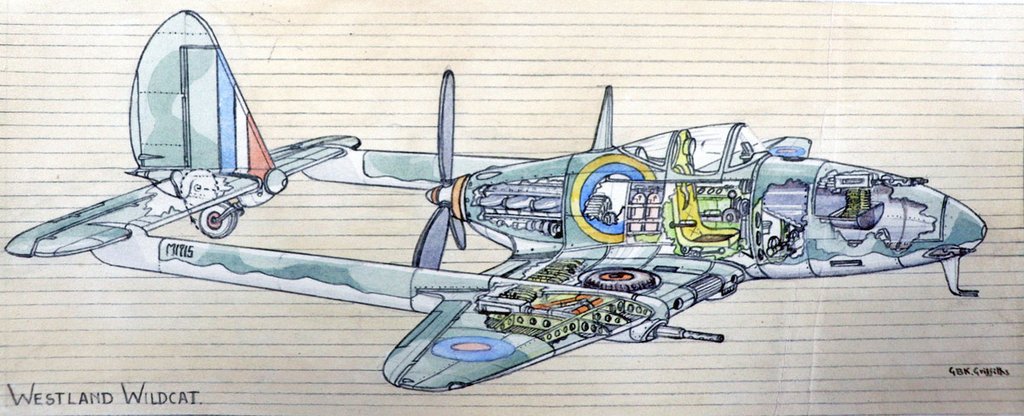
‘General Collapse’ by Ronald Searle
Date: 1939–1946
Catalogue reference: View the record N/A in the catalogue
Ronald Searle (1920–2011) studied art before enlisting in the Royal Engineers at the outbreak of the Second World War. He was captured by the Japanese in 1942. During captivity he documented the shocking conditions in the camps through a series of drawings. He published some of his drawings after liberation bringing the realities of his POW experience to the British public. He went on to work as a courtroom artist at the Nuremberg trials.
He also worked as a satirical cartoonist and produced material for the British Central Office of Information. This cartoon is part of a series titled ‘General Collapse’ poking fun at the military. The soldier depicted in this drawing sits with a confused expression next to a pile of equipment and an instruction manual which reads ‘how to put a gun together...’
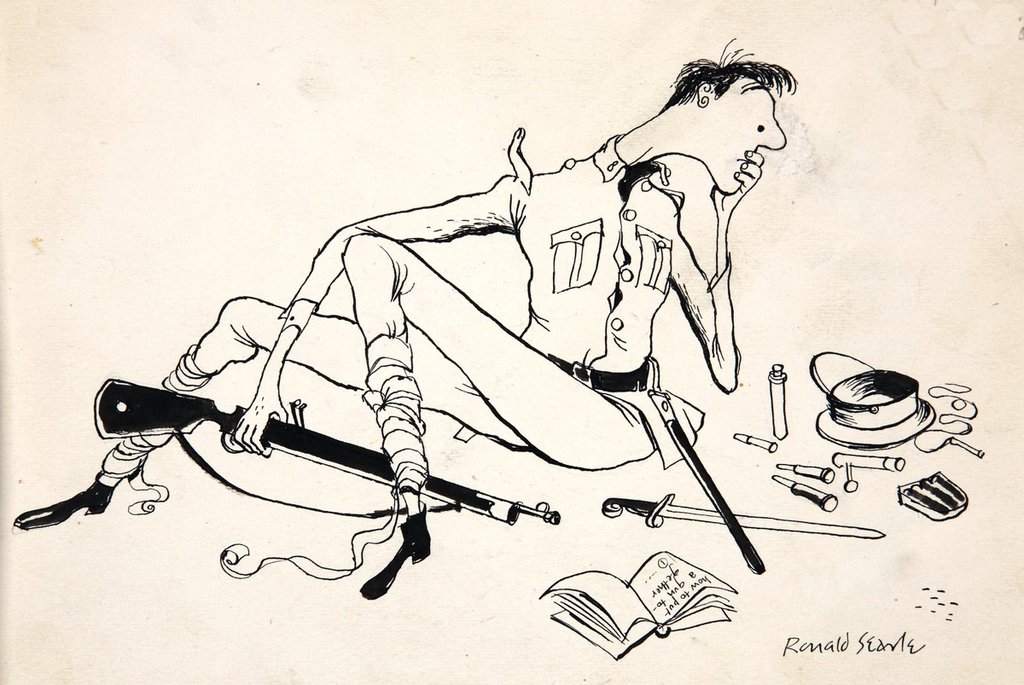
Illustration of life inside a prisoner of war camp by Phillip Bear
Date: 1939–1946
Catalogue reference: View the record N/A in the catalogue
Phillip H. Bear was working as a commercial artist in 1939 before joining the Royal Air Force as a Flight Officer. He was captured and imprisoned in a German prisoner of war camp.
Bear produced drawings for the Central Office of Information to be published in magazines. This drawing is one of series illustrating life in a prisoner of war camp following an officer named Peter. Its caption reads ‘Peter made a great business of bandaging Nigel’s leg...’
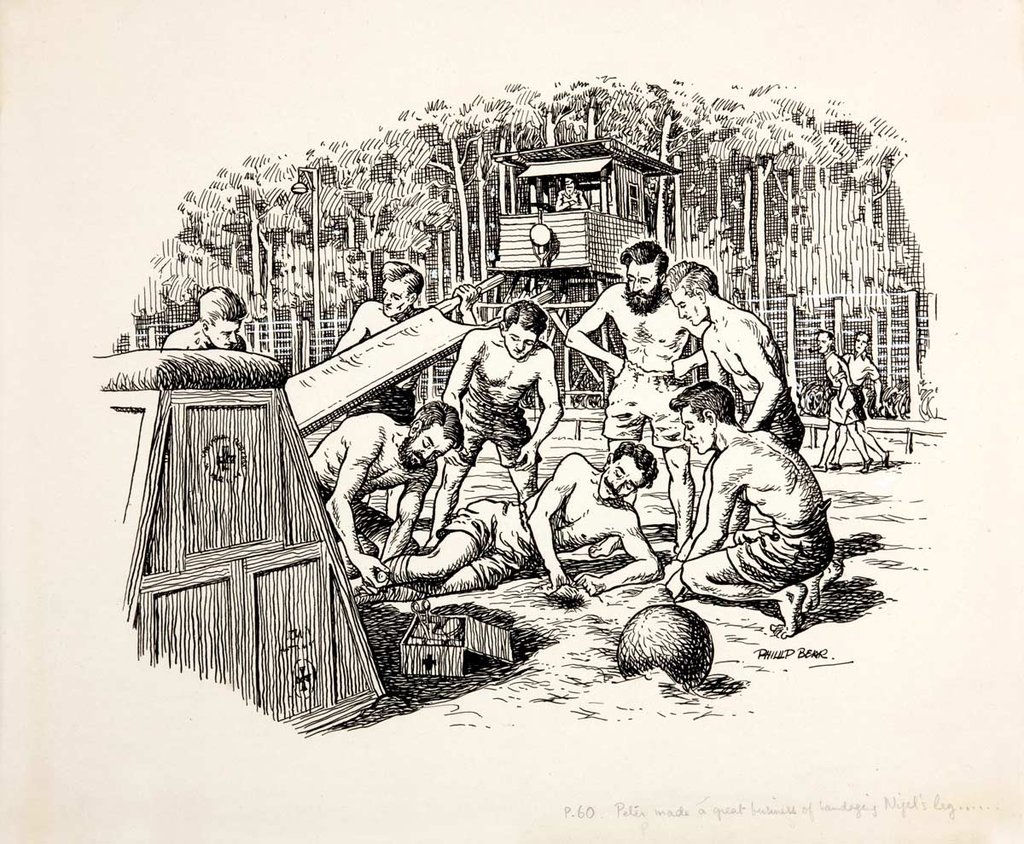
Prisoner of war record card for John Worsley
Date: 1939–1946
Catalogue reference: View the record N/A in the catalogue
Artist John Worsley (1919–2000) began his military career in the Royal Navy and used his skills to depict naval warfare as it happened. In 1943, he made sketches of the sinking of the HMS Laurentic from a lifeboat, which he then used as the basis for a celebrated painting. He went on to be appointed as an official war artist.
Later in 1943, he was captured by the Germans and held as a prisoner of war. This record card was created by German authorities and records personal information about him. It confirmed that he was captured on 13 November 1943 at Lussin Piccolo in the north of the Adriatic Sea and was imprisoned at Marlag and Milag Nord in northern Germany.
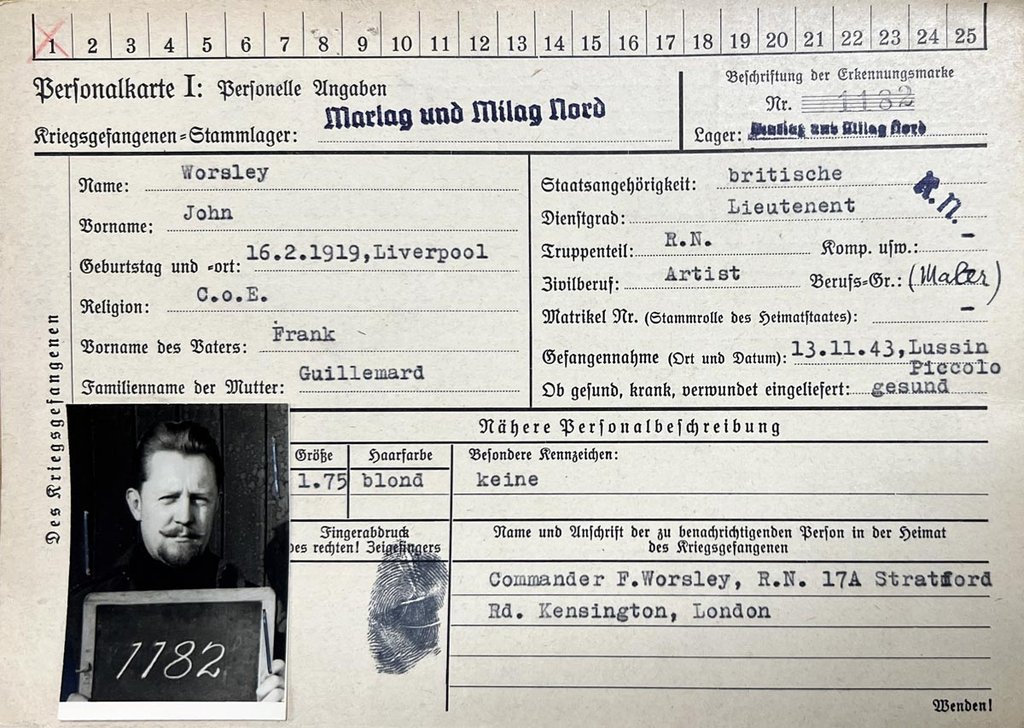
‘W.R.N.S. ratings in railway compartment’ by John Worsley
Date: 1939–1946
Catalogue reference: View the record N/A in the catalogue
While he was held as a prisoner of war, artist John Worsley documented life in the camps through his art. Following liberation, he went on to produce sketches and cartoons on other wartime subjects. This sketch depicts two tired Women's Royal Naval Service (WRNS) sailors travelling on a train. It was produced for publication in The Dittybox, a magazine for the Royal Navy.
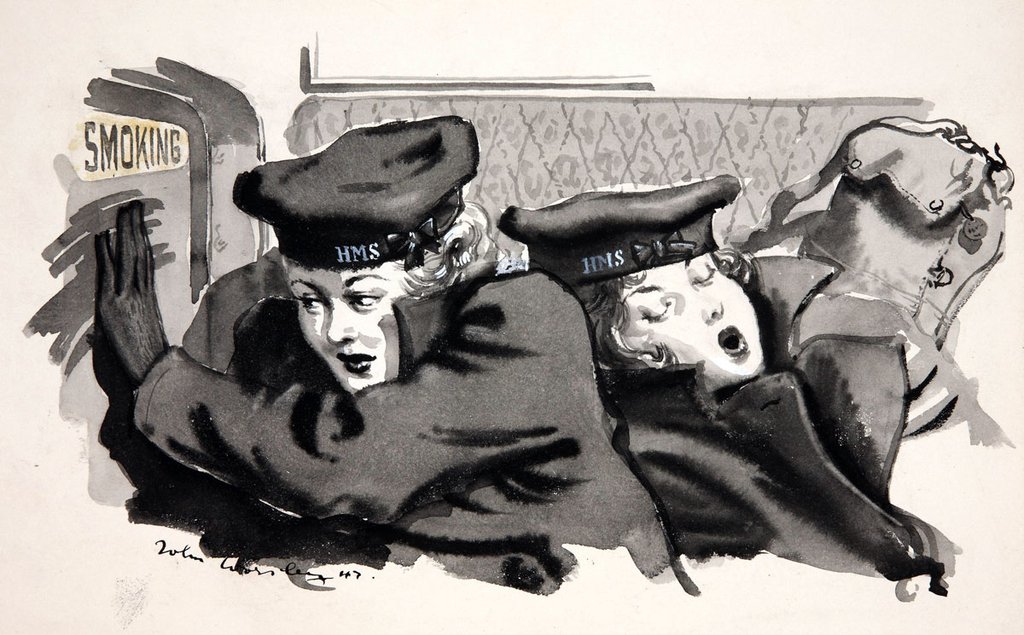
Prisoner of war card for Ivo Peter Tonder
Date: 1939–45
Catalogue reference: View the record N/A in the catalogue
Ivo Peter Tonder was born in Prague, in the former Czechoslovakia, in 1913. In 1939 he fled to the UK and joined the Royal Air Force (RAF) as a pilot. In June 1942 he was shot down over France and captured. Tonder was sent to Stalag Luft III and in 1944 he participated in the famous Great Escape as a tunneller and tailor. Tonder was later recaptured and sent to Colditz.
After the war, Tonder used his skills as a printer in the textile industry, working initially with his wife’s brother, Zika Ascher, founder of Ascher (London) Ltd., and later with Hull Traders. In 1963 he set up his own company, Ivo Textiles, with his cousin Ellen Haas. Tonder created hand screen prints for iconic 1960s fashion brand Biba, and designers Ossie Clark, Celia Birtwell and Zandra Rhodes.
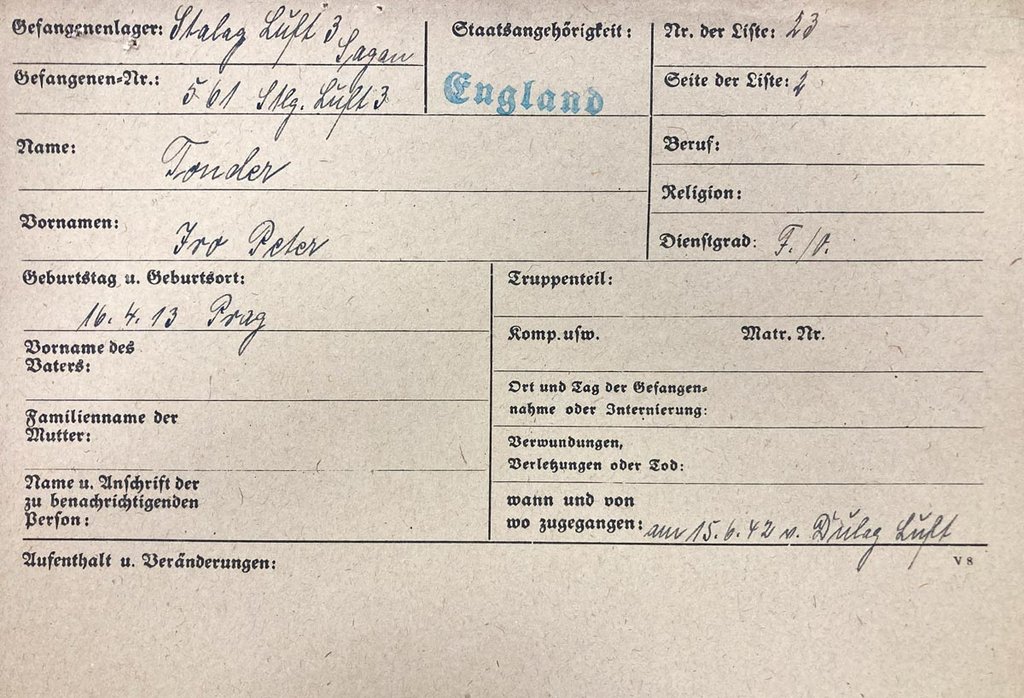
Naturalisation certificate for Peter Grey Midgley, formerly Peter Fleischmann 2
Date: 1947
Catalogue reference: View the record N/A in the catalogue
16-year-old orphan Peter Fleischmann was brought to the UK as part of the Kindertransport efforts to rescue Jewish children from Nazi Germany before the war. However, in 1940 he was interned, along with many other Jewish-German refugees, including the artist Hermann Fechenbach, in Hutchinson camp on the Isle of Man.
In captivity Peter developed his artistic skills, supported by fellow internees such as artist Kurt Schwitters. After 14 months he was released into the care of the Midgley family in Manchester, and he adopted the family name, becoming Peter Midgley.
His naturalisation certificate shows he became British in 1947. That year he began studying at Beckenham School of Art, then at the Royal College of Art in 1951. He later taught at Beckenham, then Ravensbourne College of Design and Communication. Midgley had success as an artist and has work in both public and private collections.
